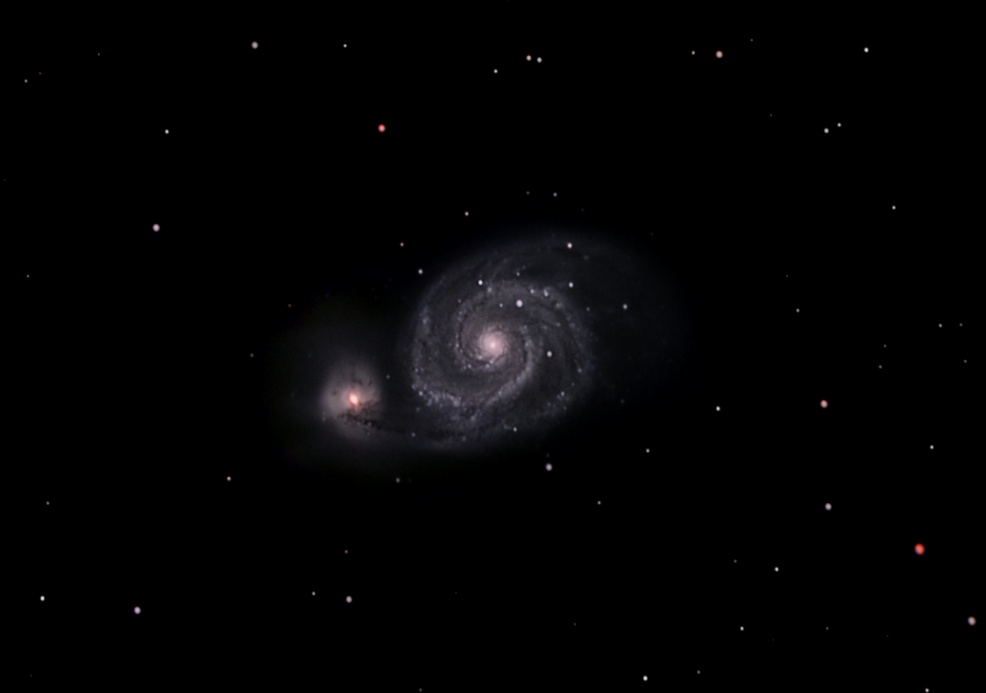
The Whirlpool Galaxy was discovered in 1773 by Charles Messier. It has the distinction of being the first galaxy discovered that shows a spiral form, although when it was first observed it was thought to be a nearby nebula that was a solar system being formed in our galaxy. It was not until about the 1920's that most astronomers finally realized that such objects were actually distant galaxies. This galaxy is about 35 million light-years away. The galaxy has a total mass of about 160 billion suns, and a diameter of about 100,000 light-years. This galaxy is about the equal of the great Andromeda Galaxy in size, although the Andromeda Galaxy appears larger to us because it is closer. The galaxy on the left is NGC 5195.
In July 2005, a supernova was discovered in M51. This was the second supernova seen in the Whirlpool Galaxy in 11 years, and in contrast, no supernova has been seen in our own galaxy in over 350 years.
This is a composite LRGB CCD image. One great thing about CCD imaging is that you can take images made on different nights and with different telescopes and combine them together. The luminance data for this image was taken on April 30, 2006 at a dark sky site west of Phoenix, Arizona, using an ST-8XE CCD on a Takahashi FCT-150 refractor. The RGB color data for this image was taken from CCD images taken on December 15, 1998 in Iola, Texas, using an SBIG ST-8 CCD and a Takahashi FS-128 refractor.
M51 (NGC 5194)
Constellation: Canes Venatici
RA: 13h 29m 47.4s Dec: +47d 12' 47"
Images by Sid Leach
April 30, 2006
L images - Phoenix, Arizona
December 15, 1998
RGB images - Iola, Texas
Recent Images.
Complete list of images.
Description of equipment used to acquire images.
Home
Feedback and comments should go to Sid